FiiO FT1 Pro
A refined Open-Back Planar that Builds Upon a Proven Foundation
The FiiO FT1 Pro is an open-back planar magnetic headphone that shares much of its physical chassis, accessories, and overall design framework with the highly regarded FiiO FT1 dynamic closed-back model. The FT1 is my “headphone of the year” and the FT1 Pro by sharing a common heritage but can the FT1 Pro proof as stellar a performer in the much more competitive mid-fi priced open planar market?
Read on to find out.
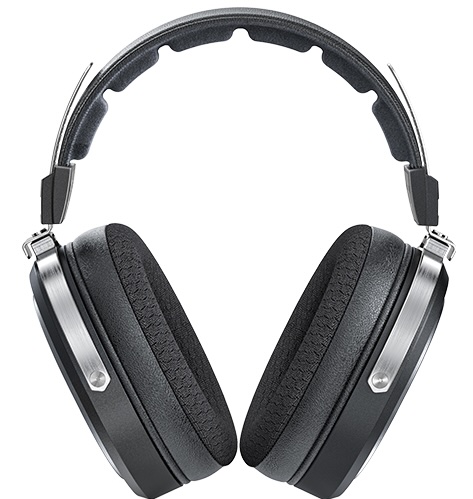
I would like to thank FiiO for providing both a prerelease FT1 Pro but also a Retail FT1 Pro.
Why 2 FT1 Pro’s? In summary, FiiO are a company that can recognise and rapidly fix a problem. But I will get into that later in the review.
You can see much more detail on the FT1 Pro on their product page
So, I’ve been using the pre-release FT1 Pro I received extensively over the past month, really enjoying the default neutral tuning without any EQ (which is pretty rare for me) but also enjoying some pad rolling, since the FT1 Pro shares the same chassis as the FT1 I had bought a bunch of different ear pads on Aliexpress recently for the FT1, and I can re-use those on the FT1 Pro. I will share some measurements and impressions I got with some of these different earpads later in this review.
But first what was the issue with this pre-release FT1 Pro? Let’s get into the details:
A tale of 2 FT1 Pro’s
I delayed this review specifically because I identified what I believed was an issue on my pre-production sample. After reaching out to FiiO, they confirmed that the retail version included a subtle adjustment as they noticed the same “issue” also.
So I thought it would be interesting and useful if I got a retail unit to compare with the pre-release and confirm that the issue has been fixed. Especially as some early reviews will also be based on the pre-release units, so I can at least include any differences the review units and the final retail units.
I finally received the retail FT1 Pro a few days ago and I have been spending time switching between both headphones. Thankfully everything that was good with my pre-release FT1 Pro is still there, but there is a subtle change to the tuning as you will see.
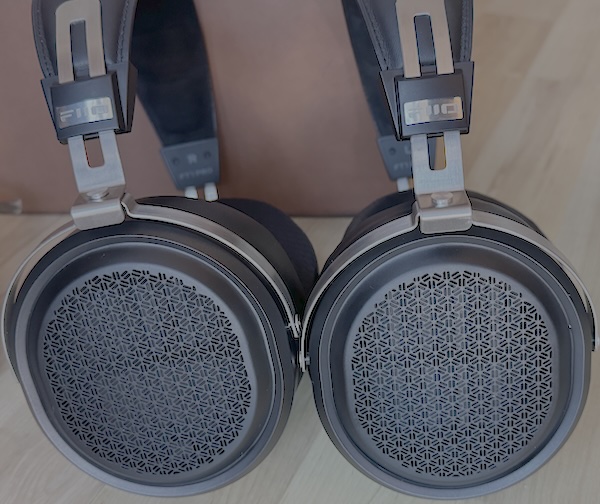
But before we get into those details, I thought it might be useful to cover the naming scheme for this headphone as that is one question everyone seems to have.
Why call it FT1 Pro ?
When I first learned of the FT1 Pro, I assumed the “Pro” might mean “Professional”. But, I did think it was a strange choice for the name of this headphone, but FiiO clarified that the “Pro” in FT1 Pro stands for “Progressive.” That said, I personally feel a name like “FT1 Open” or “FT1 Planar,” or even rebranding it as “FT2,” might have better communicated the nature of this product. Still, I understand their logic, their R&D team developed a basic headphone “chassis” for the entry level of headphones. Only later in the development lifecycle did they decided they would use that chassis for both a closed back and an open back.
As someone who works in software, I often build new applications using the same frameworks or “scaffolding” reusing something that proved successful in previous, but very different project. This is essentially what FiiO did here, reusing the FT1’s chassis, headband, cables, and overall construction approach allowed them to quickly develop and launch the FT1 Pro. Despite being a fundamentally different design internally (i.e. planar and open-back), it’s immediately familiar and comfortable from a user’s standpoint, sharing the same headband and with similar weight and earpads.
So lets now get into the unboxing:
Packaging and Accessories
The FT1 Pro arrives in packaging nearly identical to the FT1:
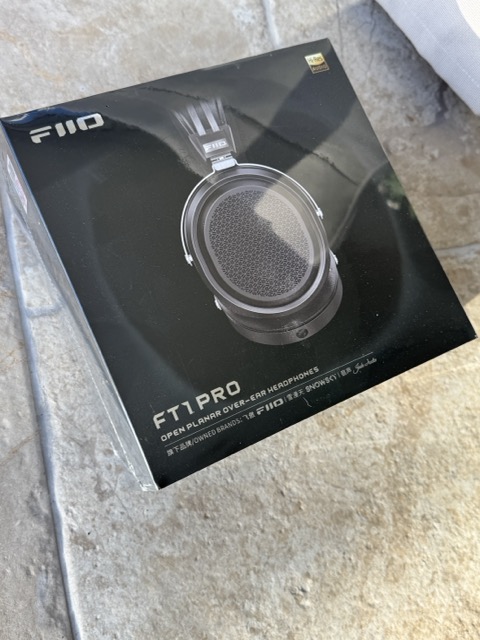
The back has similar useful specifications:
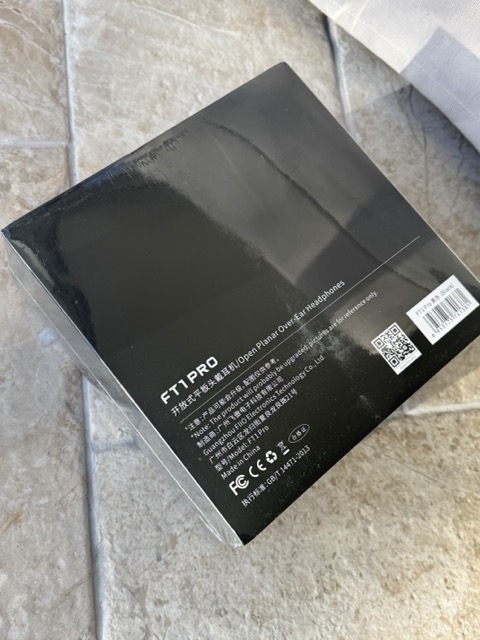
Sliding it out of the sleeve:
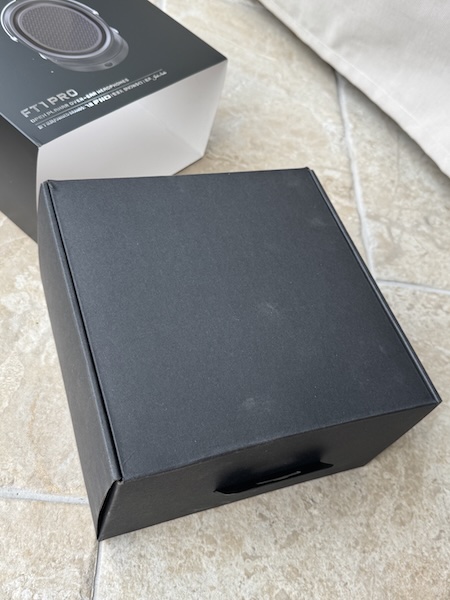
Then opening the box you see the same very nice (for the price) hard carry case as you would get with the FT1:
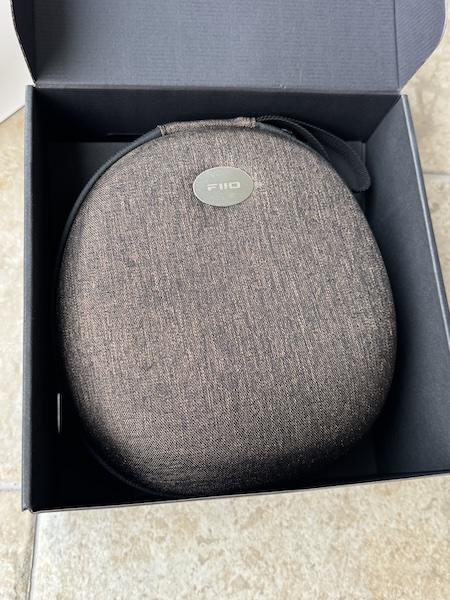
For comparisons here are both the boxes and the cases from the Pre-release FT1 Pro and the Retail release, so nothing has changed:
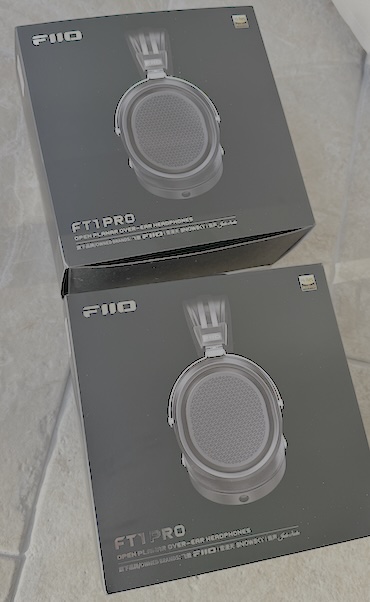 |
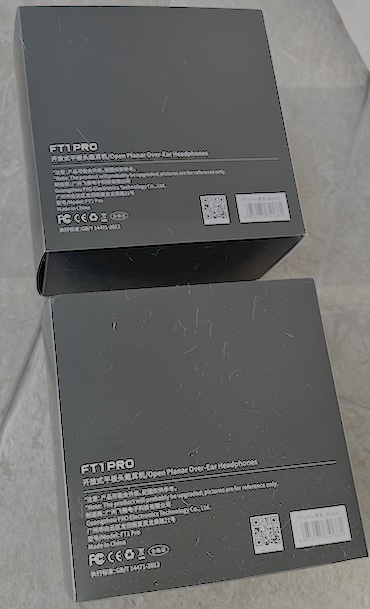 |
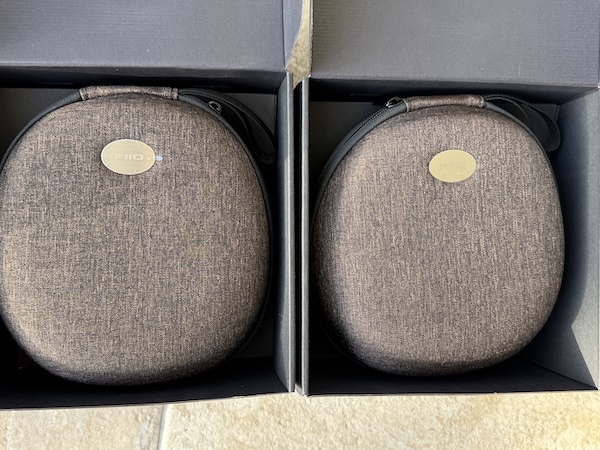 |
Opening the case you see the FT1 Pro and the cables:
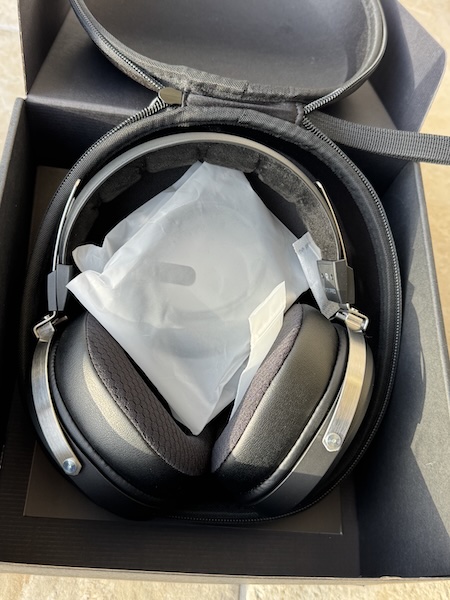
The box, the molded carrying case, and the included cables are all high quality and give a feeling of consistency.
The 3.5mm single-ended and 4.4mm balanced) cables are very good quality especially in this budget price range:
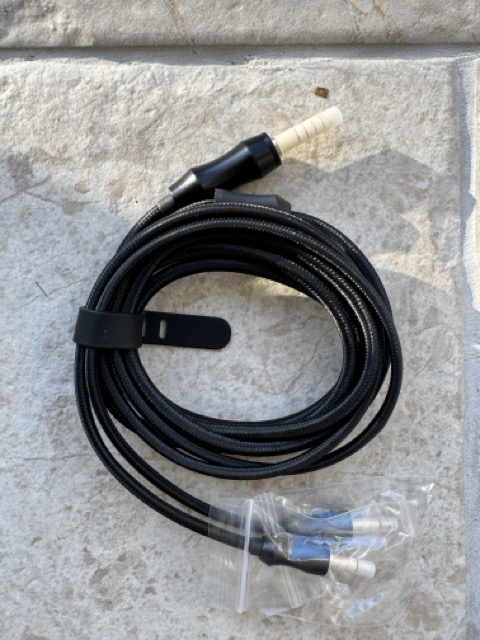 |
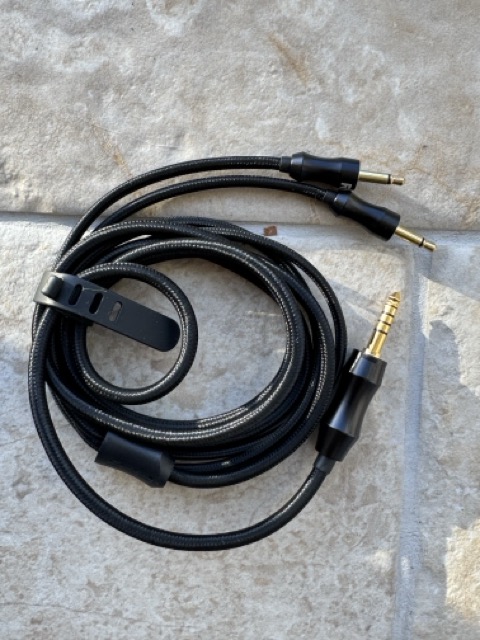 |
While not as lavish an accessory package as some of FiiO’s higher-end open-backs (like the FT3 and FT5 series), the FT1 Pro still provides more than what you’d typically get at its price point, especially compared to other planar headphones in this similar price range that I will compare it with later, ie. the Hifiman Sundara and Edition XS.
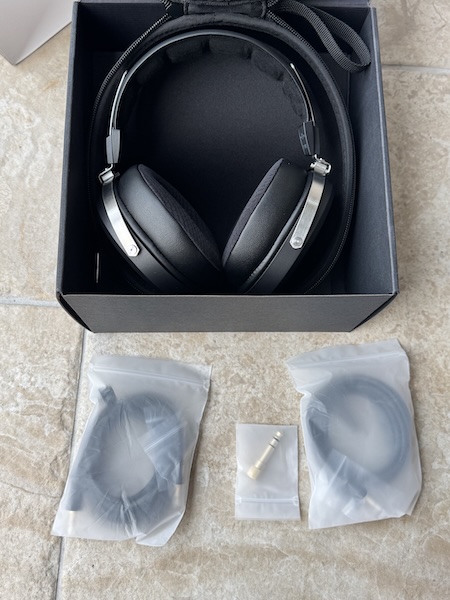
The consistency in packaging and accessories between the FT1 and both FT1 Pro confirm that the pre-release unit was the same as the final retail experience, only the subtle tuning changes which I will get too separated them.
Build, Comfort, and Design
The FT1 Pro feels a lot like the original FT1. The headband assembly, earcup yokes, and even the ear pads are
very similar:
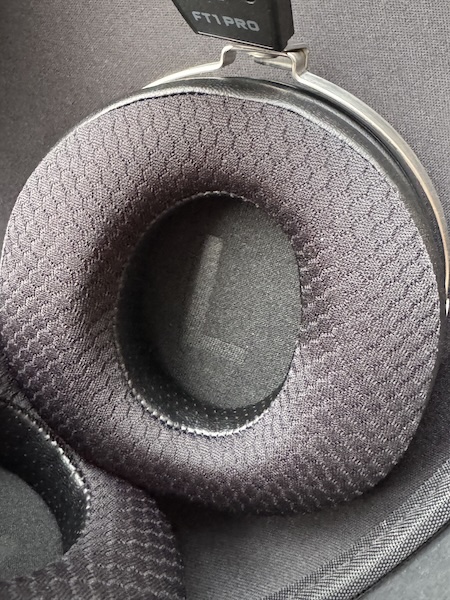
This means you get a comfortable and familiar fit right out of the box, the headband could do with slightly more
padding, but it’s still very comfortable:
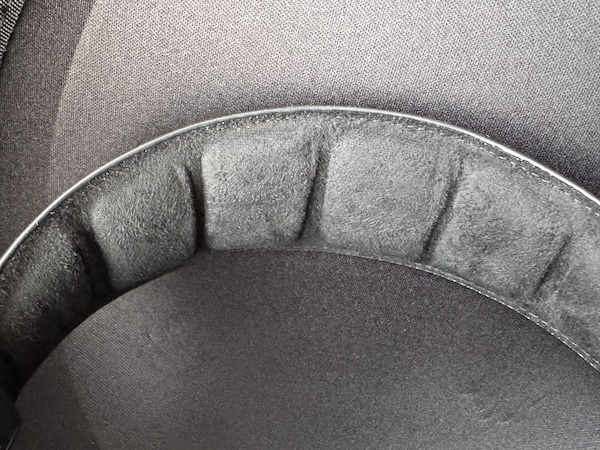
And the extension mechanism is that familiar one from the FT1 which works very well:
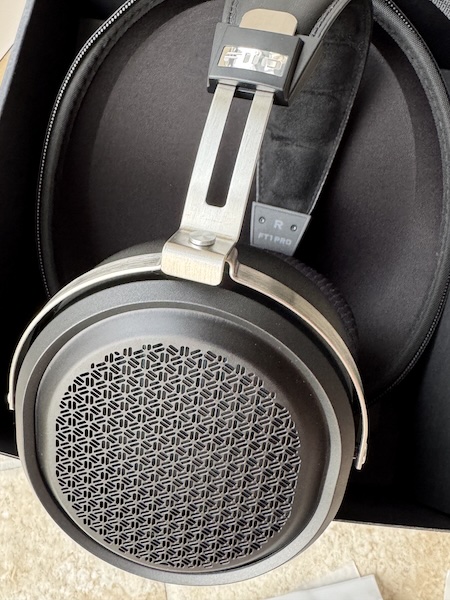 I have heard of a few people who have had to fix the ‘screws’ on the swivel mechanism, but while that can be
annoying it seems like it is an easy fix and leads me to believe this headphone will be easy to fix for many year
going forward.
I have heard of a few people who have had to fix the ‘screws’ on the swivel mechanism, but while that can be
annoying it seems like it is an easy fix and leads me to believe this headphone will be easy to fix for many year
going forward.
The main difference, visually, between the FT1 and the FT1 Pro is the open-back grill design that reveals the planar driver’s unique structure:
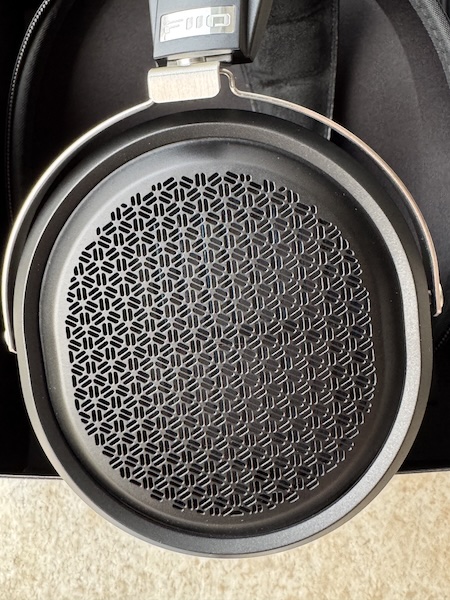 |
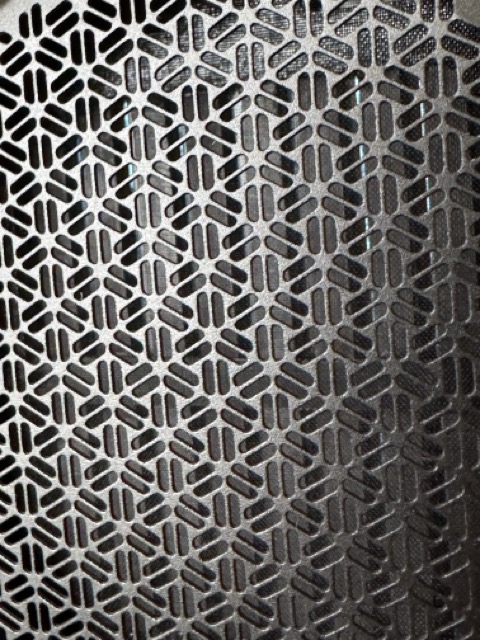 |
The finish is well-executed, with a sturdy feel that belies its price point.
Taking off the earpads reveals driver and the planar magnets:
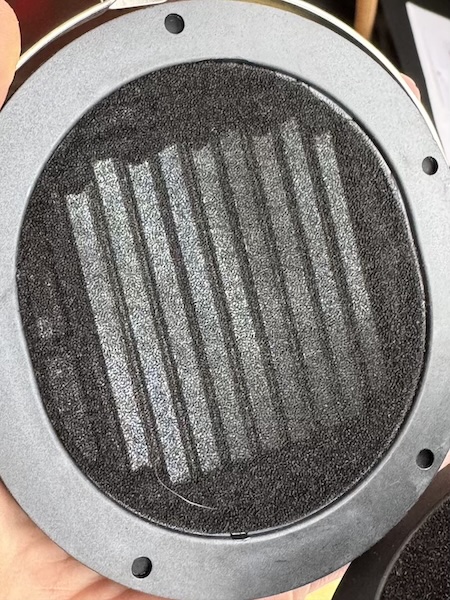
For those wanting the further take apart the FT1, the holes around the driver which I imagine
contain screws are not as easily accessible:
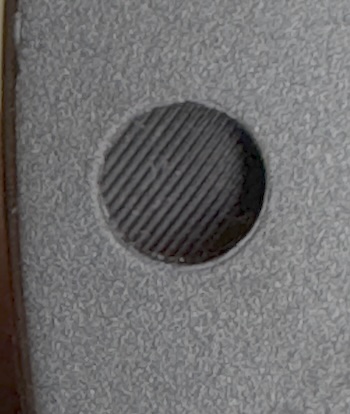
Comfort and Ergomonimcs
For long listening sessions, the FT1 Pro excels. The clamping force is moderate, and the ear pads are plush with generous space for most ear sizes. The FT1 Pro also handles a slightly broken seal from glasses extremely well with a minimal drop in the bass response. I have a few measurements with glasses later.
Unlike some planar headphones that can be heavy or awkward, the FT1 Pro remains
well-balanced on the head with generous earpad comfort:
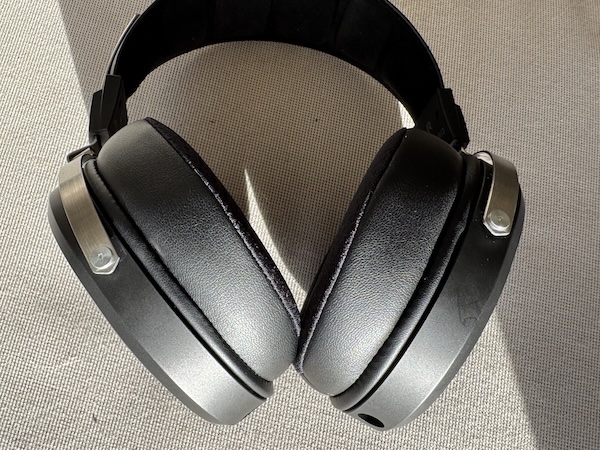
Using the same FT1 chassis ensures a stable and comfortable wear for hours on end. It also means pad swapping is extremely easy. I had been busy on Aliexpress buying various earpads for my FT1 and of course they all work on the FT1 Pro also. Here is one of my favourites:
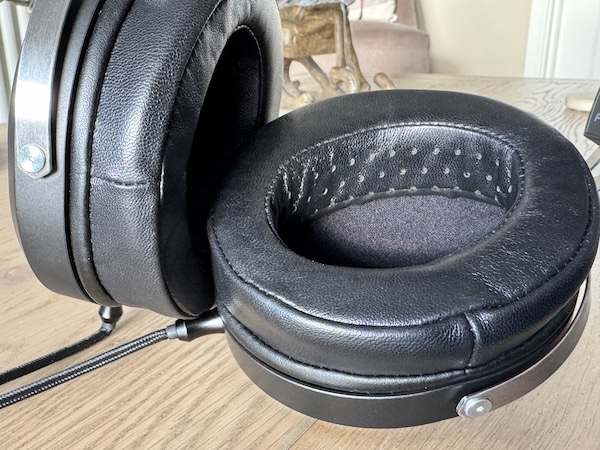
More on some of the earpads, I tried with the FT1 Pro in the measurements section.
Sound Quality differences between pre-release and retail versions
So, what did I notice in the pre-release model I was listening too? While the tuning had a fantastic subbass extension similar in lots of ways to the Hifiman Edition XS, I could relatively easily get the headphone to resonant and ‘rattle’ mainly if I played some sub-bass test tones loud. Though much louder than I would normally play music so it was not that obvious and didn’t affect normal listening.
But playing 30Hz via Tone Gen loud and suddenly the headphone would both distort and rattle badly. Getting this to happen with real music was much more difficult, but once I noticed I could do this with a test tone I went in search of various sub-bass heavy tracks with long segments of deep sub-bass. So while most people would probably not notice this especially at normal listening levels, I feel bass heads that listening loud and especially those that use EQ to boost the sub-bass would get significantly more distortion than they should expect. I could hear the distortion playing a few sub-bass heavy tracks loud, so this was technically an ‘audible’ issue.
Changes from the Prerelease to Retail Version
After alerting FiiO, they acknowledged it was related to “designing the F0 resonance frequency too low”. The retail version subtly adjusts damping materials reduce the sub-bass resonance. These changes are minor but the retail version of the FT1 Pro is much more ‘stable’ in those sub-bass heavy tracks.
I will present more measurements later but here are 2 waterfall charts to visually indicate this distortion:
| Pre-release unit | Retail unit |
|---|---|
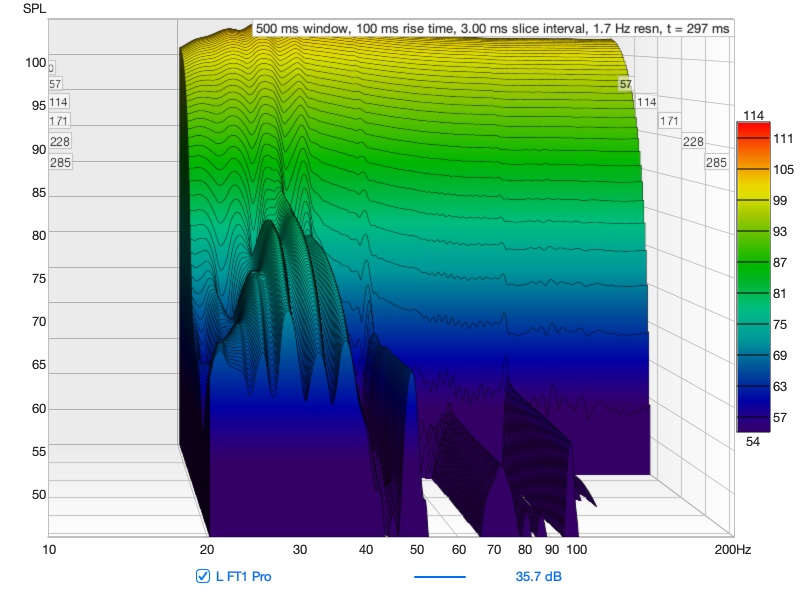 |
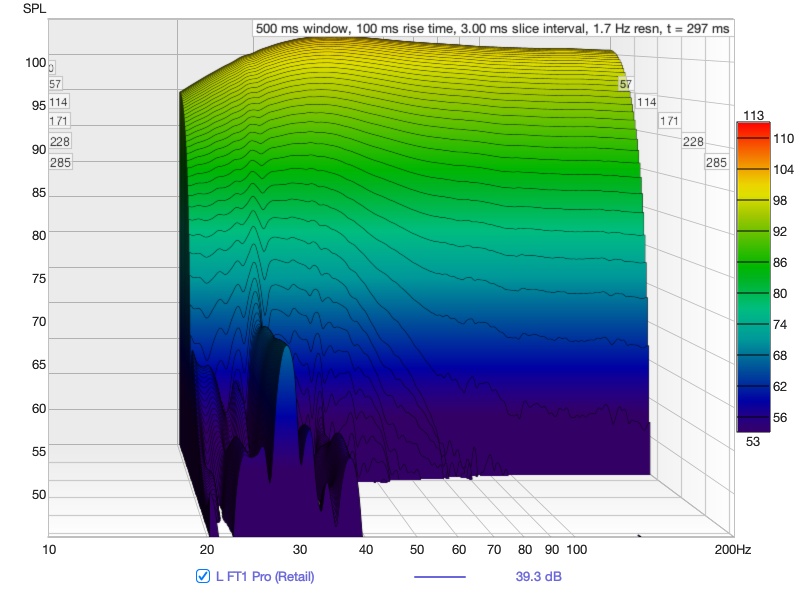 |
You can probably spot the slight roll-off in sub-bass within the retail version, this greatly reduces the likelihood of generating audible distortion with the retail version.
Tonal Balance
The FT1 Pro’s tonal balance is neutral-leaning with a slight warmth, with a very similar tonal performance to Edition XS and the Sundara, probably somewhere between these 2 excellent headphones. Planar drivers often excel at delivering linear bass and detailed mids, and the FT1 Pro is no exception, in fact the original prerelease version had exceptional linearity right down to the sub-bass (but as I mentioned above possible it was too ambitious), but the retail unit shares everything the prerelease unit had down to 30hz.
So the bass is articulate, with a quick transient response that planar headphones are known for. The midrange is full and engaging, but it does have that “soundstage” frequency trick with a slightly recessed region similar to many other headphones, and the treble has good extension without harshness.
As you will see later I would put the tonal balance of the FT1 Pro between the Sundara and the Edition XS.
Detail Retrieval and Dynamics
Planar drivers are renowned for their speed and resolution, and the FT1 Pro lives up to that expectation at its price point. Micro-details in complex tracks come through clearly, and there’s a good sense of layering between instruments. Dynamics are solid, while the FT1 Pro might not hit the deepest sub-bass like some flagship planars, it never feels lacking or dull.
Soundstage and Imaging
The open-back design naturally offers a more spacious soundstage compared to the closed-back FT1. The FT1 Pro’s stage isn’t the widest planar I’ve heard, I would still recommend the Edition XS if you are chasing stage, but it is well above average in its price class. Imaging is precise, and there’s a nice sense of three-dimensionality, making it easy to pick out individual elements in a mix.
Specifications and Measurements
| Feature | Details |
|---|---|
| Type | Over-ear, Open-back |
| Driver | Planar Magnetic |
| Impedance | ~20Ω |
| Sensitivity | 95dB/mW@1kHz 112dB/Vrms@1kHz |
| Frequency Response | 10Hz - 40kHz (Rated) |
| Cables | 3.5mm SE & 4.4mm Balanced |
| Weight | ~360g (Excluding Cable) |
These specs are well within what you’d expect from a modern planar headphone. The FT1 Pro is not difficult to drive from a mid-tier DAC/amp or even a portable player, I used it happily with my Apple USB-C dongle. While it benefits from decent amplification, it doesn’t require a massive desktop rig and is much easier to drive than most of its competitiion.
Measurements
Note: These measurements were taken with my KB501X soft ear pinnae with a 711 clone coupler. And are available on Pragmatic Audio here
Let’s start with the frequency response:
Frequency Response and Channel Balance:
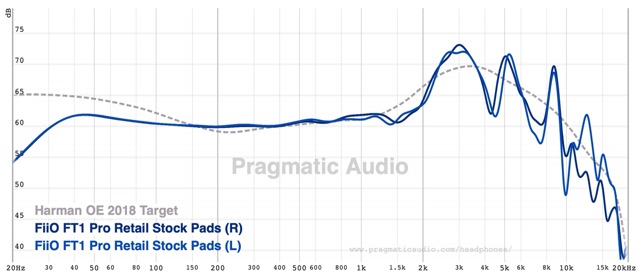
Both my retail and the pre-release show excellent channel balance.
For comparison here is a comparison with the Pre-release model.
So it is very similar but the Pre-release model did go down into the sub-bass level a little smoother:
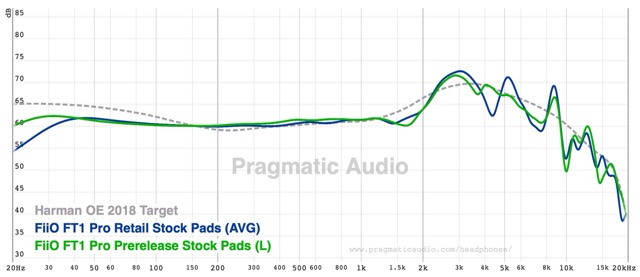
Distortion:
Here is the distortion at 90db+ so mostly well controlled:
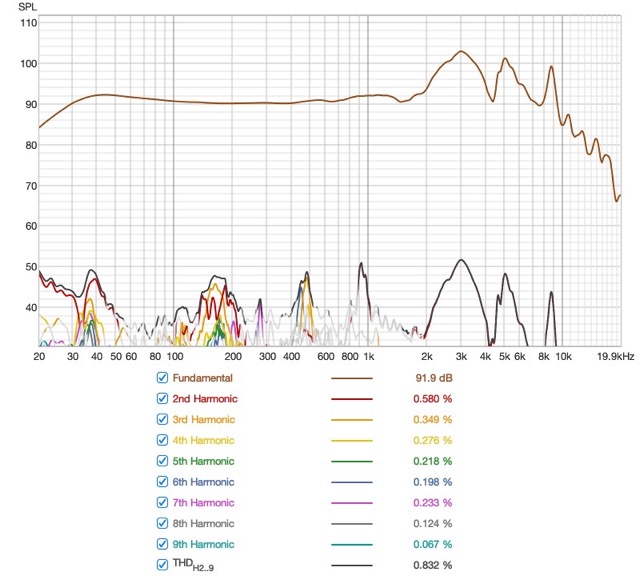
And as a percentage:
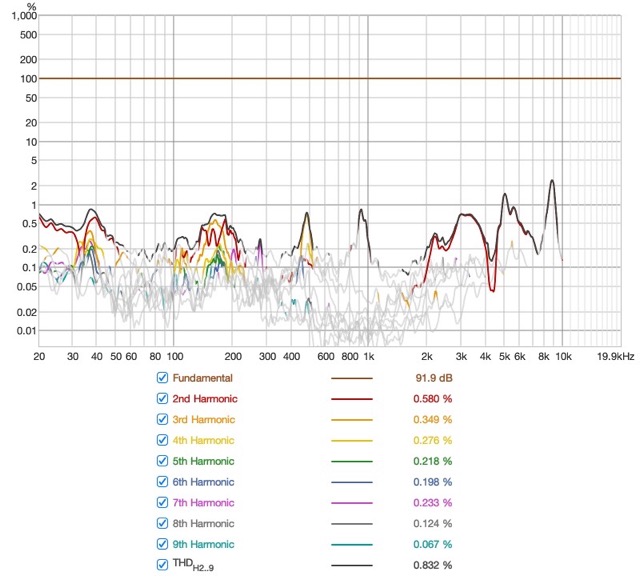
But if you really push the volume (this is over a 100 dbSPL) you do get more distortion:
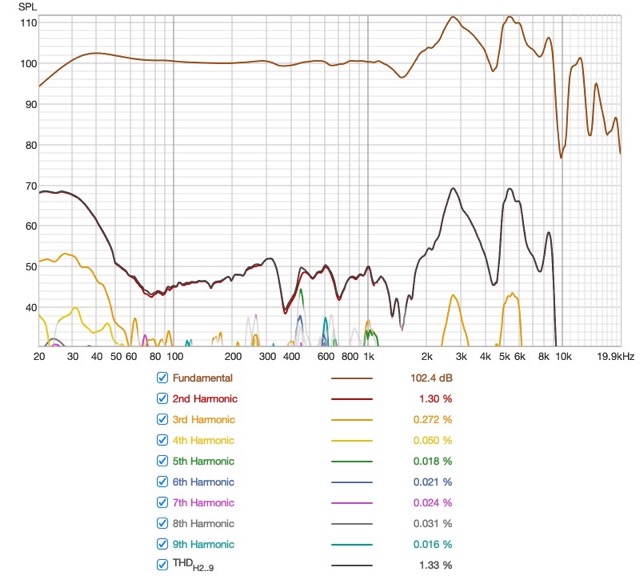
This would be my only area of concern with the FT1 Pro, but I would never advise listening this loud but if you like to listen very loud you might get some distortion.
Alternative Ear pads Measurements:
One area where the FT1 Pro shines is in how it can easily utilise cheap third party earpads in the same way that
the FT1 can. Here are the 4 that I currently tried (and measured):
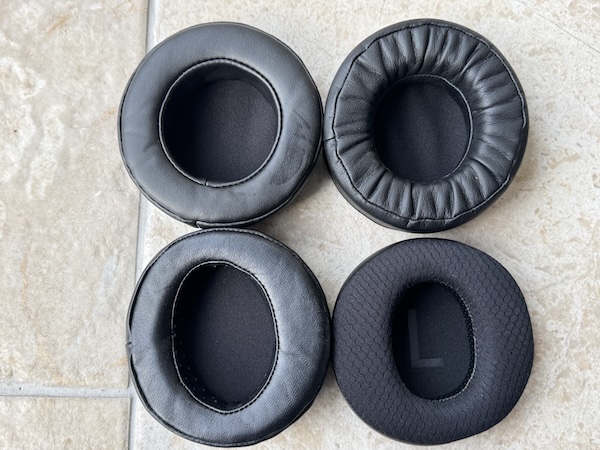
But I have now ordered a few more variations, including velvet earpads, so I might update this review in a few weeks.
Here are the comparison measurements:
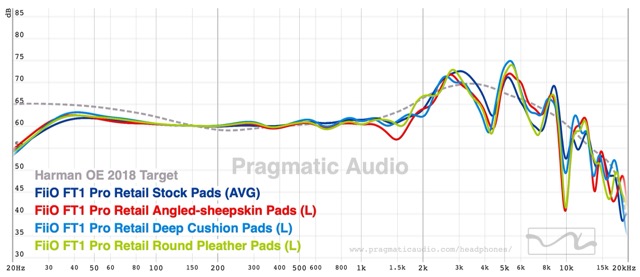
So of these ear pads, the Angled Sheepskin are the only ones that dramatically change the profile.
Soft Ear Pads Cushions:
I originally bought these earpads for the FT1 ( as someone mentioned on Reddit that they would work with the FT1 )
even though they are specifically marketed for the Hifiman Sundara:
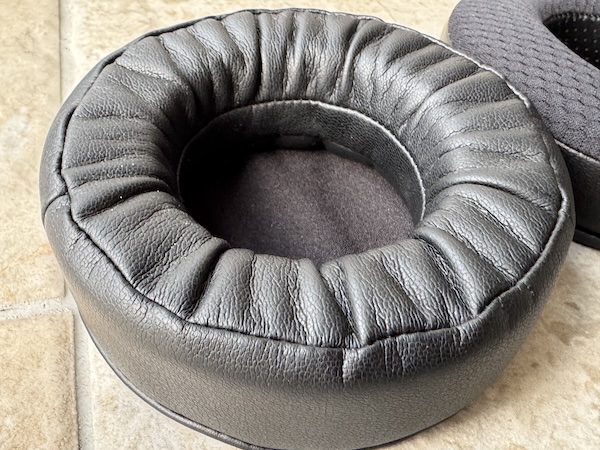
And I bought them from this Aliexpress store but it is type 1 and they are called the “Earsoft Replacement Ear Pads Cushions”.
Here they are on the FT1 Pro - I love how thick and comfortable these are:
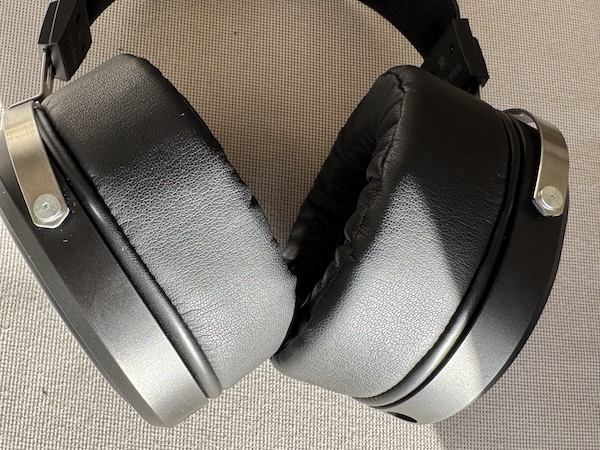
Here are the measurement comparisons between this one and the stock pads:
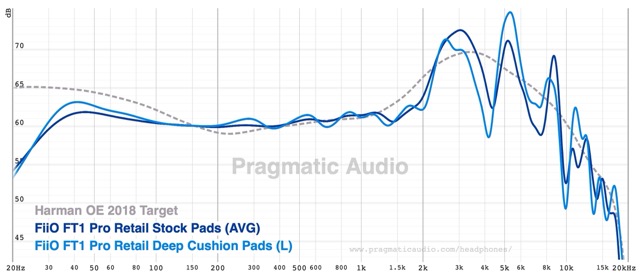
You get a similar but slightly more bass and some small little changes to the treble, though nothing too dramatic as I cannot hear that sharp 5K peak when listening to a frequency sweep.
Angled Sheepskin ear pads:
Here is another pair that I really like on the FT1 Pro:
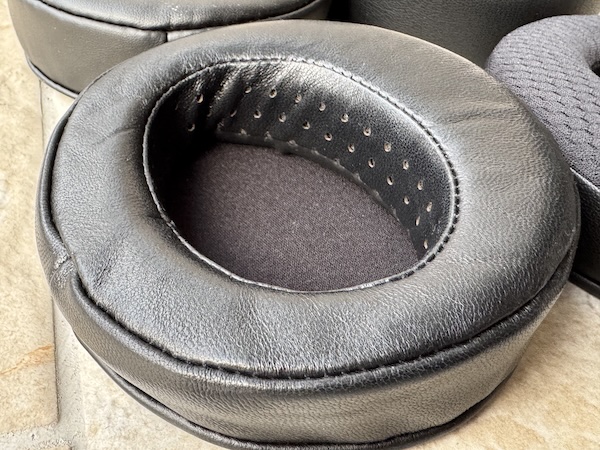
They are called “Angled sheepskin Round Leather Perforated Ear Pads Round Earpad size 105mm” and are available from here
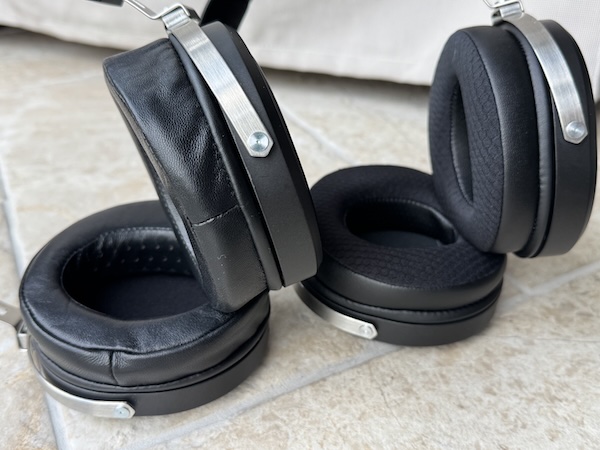
I really like these ear pads, but they do change the FR a little bit more - especially in that 1-2Khz ‘soundstage’
region:
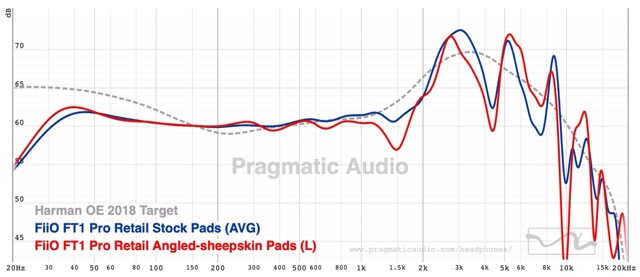
Round Ear pads
These were the cheapest (and are not as comfortable as the other 2 above) by for $6 it was worth the cost.
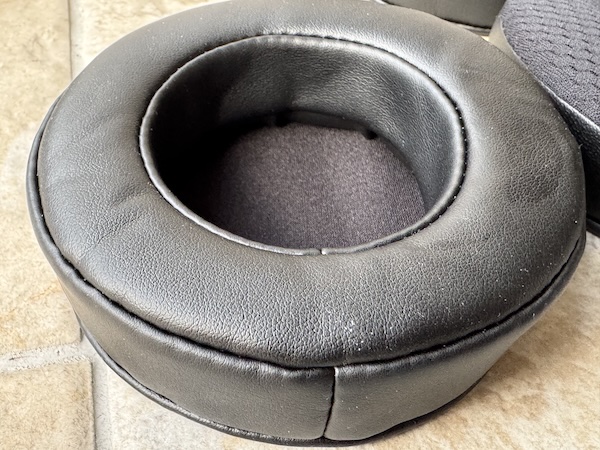
Its called “Replacement 1 Pair Round Ear Pad - size 105mm” and are available from here
These have some subtle changes to the treble region but again nothing too dramatic:
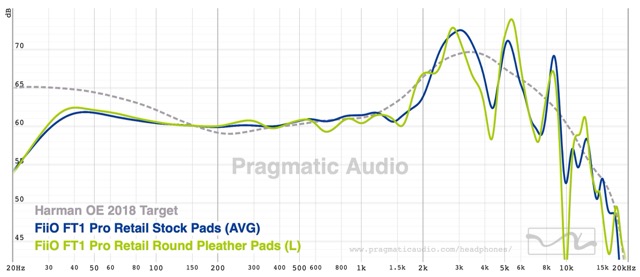
Stock earpads
But I should say again, that the original stock earpads are also extremely comfortable:

But for enthusiasts who like to experiment, have simple and cheap alternatives to this earpads is a great option with this headphone.
Comparisons
With the FT1, FiiO managed to make an exceptional closed back that effectively has no competition anywhere near its price range, but the FT1 Pro enters a much more competitive space. But I think with the recent Hifiman price cuts, it’s real competitors are probably the 2 fantastic Hifiman mid-fi headphones, the Sundara and the Edition XS. These have for a few years been the mainstay of that mid-fi planar market, but I think the FT1 Pro is aiming straight at these headphones. So does it have a chance to capture the market from these headphones?
Here is the FT1 Pro with both these Hifiman’s:
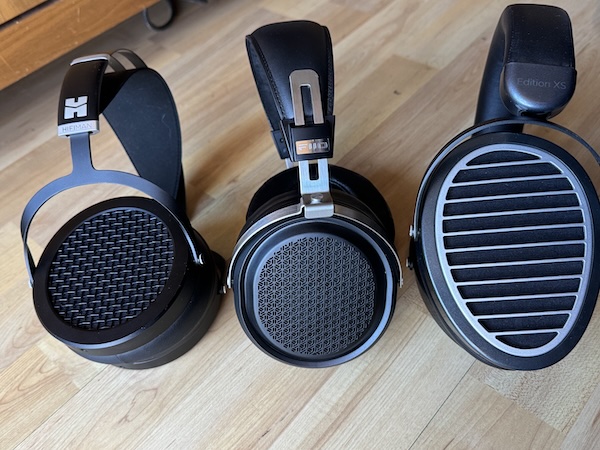
Here is a comparison of the frequency responses - I included both the prerelease and the retail FT1 Pro here:
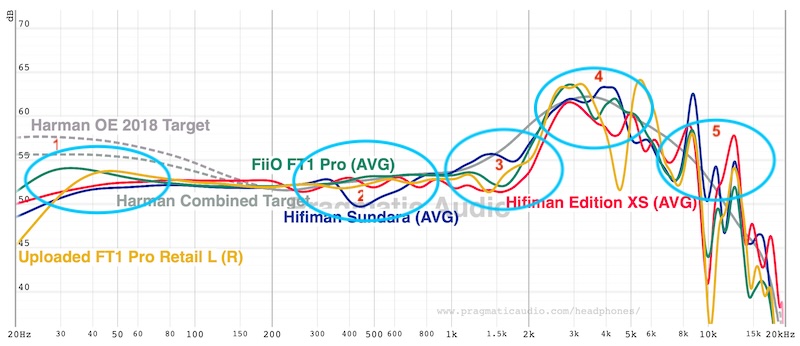
I have highlight 5 areas in this comparison:
- Sub-Bass - you can see both FT1 Pro have good bass response but the retail version now rolls off under 30Hz
- Lower Midrange - my Sundara has a dip here (only in the measurements - I cannot “hear” this dip)
- “Soundstage” - so this is the area where there is a tradeoff between soundstage (like the Edition XS ) and
tonally accuracy wher the Sundara is more accurate. Both FT1 Pro’s take a sensible mid-ground in this area. - Pinna Gain region - both FT1 Pro are a little ‘hot’ here and the Sundara has a similar boost in a slightly different area
- Edition XS has a boosted upper treble region, while the FT1 Pro’s and the Sundara are more relaxed
Hifiman Sundara
The Hifiman Sundara is a well-established open-back planar often hailed as one of the best entry-level planars. Compared to the Sundara, the FT1 Pro has slightly better soundstage and offers a bit more low-end fullness. The Sundara may have a slightly more airy top end, but the FT1 Pro’s midrange coherence and smoother upper mids may appeal to those who find the Sundara’s treble energy fatiguing. Build quality-wise, the FT1 Pro feels a touch more premium in materials and especially with the accessories you get. I do like the Sundara headband, but I felt the FT1 Pro was more comfortable overall, and it is much easier to change ear pads with the FT1 Pro.
The Sundara though has much less bass distortion, so if you typical EQ the subbass on your headphones the Sundara would be still be a better pick. But I honestly would be incredible happy with either of these headphones they are both excellent and more similar than they are different.
Hifiman Edition XS
The Edition XS is known for its expansive soundstage and brighter overall tonality. The FT1 Pro, by contrast, is more balanced and less forward in the upper mids and lower treble. The Edition XS might provide a more “out of head” experience especially with the larger egg shaped earcups, but the FT1 Pro’s slightly more forgiving tuning and robust build, along with its reusability of FT1 accessories, could make it a preferable option for those who want a more even sound without EQ. But If you chase “soundstage” I still think the Edition XS is still a slightly better choice but only if you like the size of those extremely large ear cups. I would say the FT1 Pro is a better all-rounder headphone especially at the price.
Rating
Considering the price point, the modular development approach, and the improved tuning / less subbass distortion in the retail version, the FT1 Pro earns a 5-star pragmatic rating. It delivers a lot of planar performance, comfort, and build quality for its cost. I think FiiO have done an incredible job with both FT1 headphones and with the FT1 Pro they have a open back Planar that is arguable better than both its main competition the Sundara and the Edition XS.
Conclusion
The FiiO FT1 Pro represents a clever adaption of the same FT1 platform, this time delivering a planar open-back experience with minimal compromise. By reusing the original FT1 framework, FiiO accelerated development and refinement, ultimately producing a headphone that can comfortably compete with well-established rivals. The final retail tuning fixes early minor issues, offering a balanced, detailed, and immersive listening experience.
If you valued the construction, comfort, and accessories of the FT1 but wished for an easy to drive planar with that open-back soundstage, the FT1 Pro is a compelling choice. Its ability to respond to earpad swaps and the stable, high-quality design makes it a strong contender in the competitive planar headphone market. It’s a prime example of how a company can move rapidly and evolve a proven chassis into a distinctive new product.